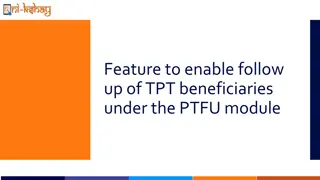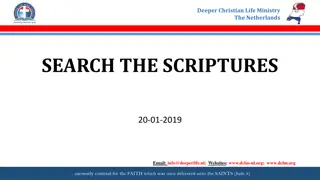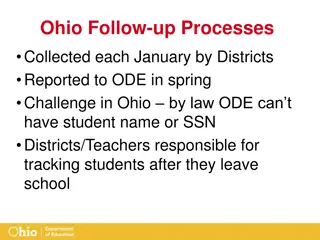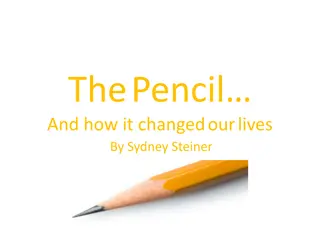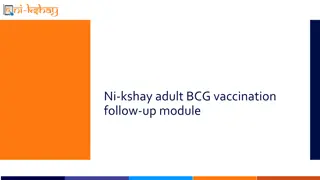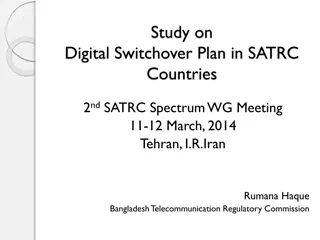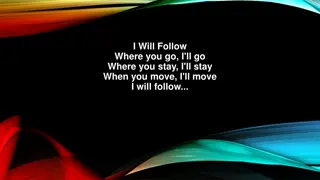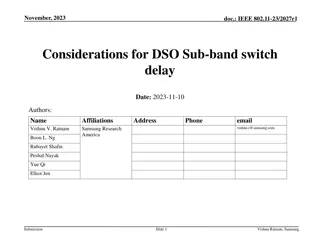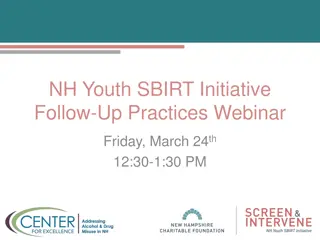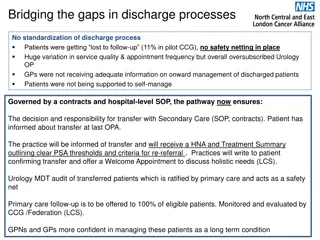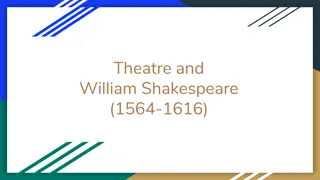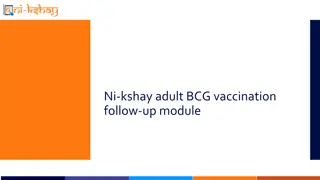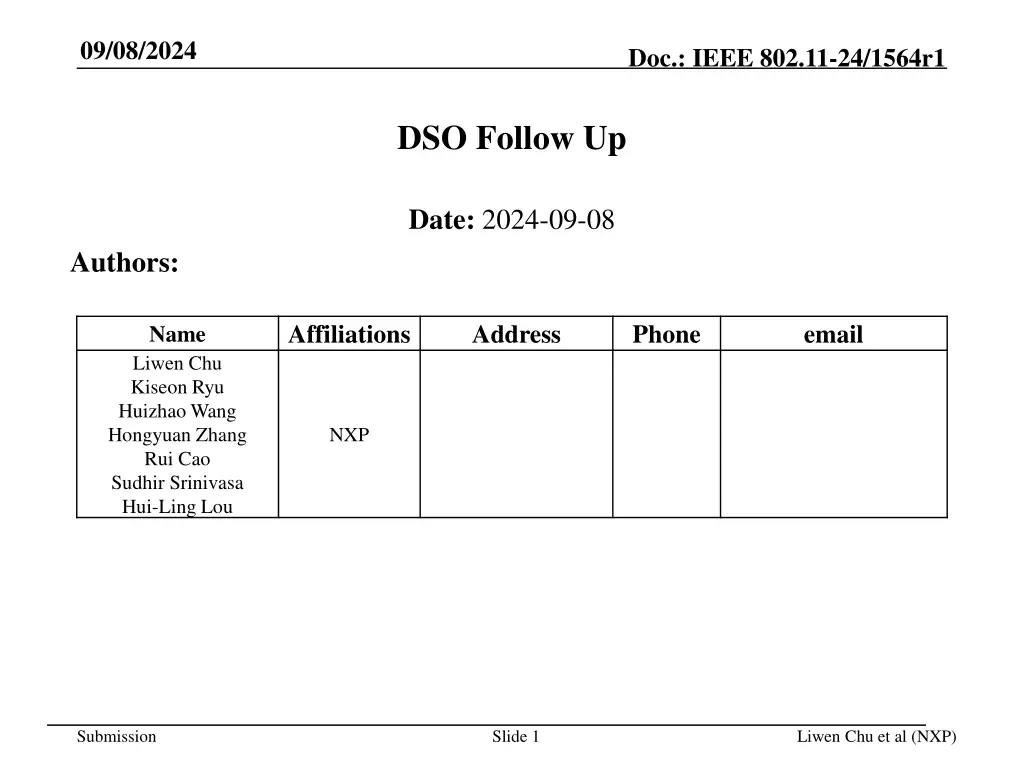
Dynamic Channel Switching Protocol for IEEE 802.11 Networks
Explore the protocol for Dynamic Channel Switching Operations (DSO) in IEEE 802.11 networks, involving soliciting control frames, STA parking channels, frame exchanges, switching back to primary channels, and channel puncture methods. Learn about the rules and procedures governing DSO STA operations and the implementation of dynamic channel puncturing in secondary channels.
Download Presentation

Please find below an Image/Link to download the presentation.
The content on the website is provided AS IS for your information and personal use only. It may not be sold, licensed, or shared on other websites without obtaining consent from the author. If you encounter any issues during the download, it is possible that the publisher has removed the file from their server.
You are allowed to download the files provided on this website for personal or commercial use, subject to the condition that they are used lawfully. All files are the property of their respective owners.
The content on the website is provided AS IS for your information and personal use only. It may not be sold, licensed, or shared on other websites without obtaining consent from the author.
E N D
Presentation Transcript
09/08/2024 Doc.: IEEE 802.11-24/1564r1 DSO Follow Up Date: 2024-09-08 Authors: Affiliations Address Phone email Name Liwen Chu Kiseon Ryu Huizhao Wang Hongyuan Zhang Rui Cao Sudhir Srinivasa Hui-Ling Lou NXP Submission Slide 1 Liwen Chu et al (NXP)
09/08/2024 Doc.: IEEE 802.11-24/1564r1 Soliciting Control Frame and STA s Parking Channel Each STA that supports DSO (DSO STA) announces the padding time for STA s switch from primary channel to the parking channel. BSRP as the initiating frame is used to solicit DSO STA s channel switch. The BSRP Trigger needs to satisfy the padding requirement of the solicited DSO STA(s). It is TBD whether MU-RTS can be used as the initiating frame. The RU (RU) being allocated to a STA in the initiating frame that triggers the STA s dynamic channel switch decides the STA s DSO sub-band (parking secondary channels). Whether there is other indication is TBD. Submission Slide 2 Liwen Chu et al (NXP)
09/08/2024 Doc.: IEEE 802.11-24/1564r1 Frame Exchanges and Switching Back to Primary Channel It is not allowed to have a frame exchange that no TXOP responder is solicited in primary channel. if a DSO STA parking in secondary channel switches back to primary channel based on the similar rules of eMLSR s switch back to listening mode. Submission Slide 3 Liwen Chu et al (NXP)
09/08/2024 Doc.: IEEE 802.11-24/1564r1 Channel Puncture (1) 11be s channel puncture: Without Trigger frame soliciting the responding frame, a PPDU needs to follow BSS operating channel restricted by the unpunctured channel bitmap if exists for the secondary channels be used. With Trigger frame soliciting responding frame, a PPDU can puncture any secondary channel being allowed by the BSS operating channel. The primary channel can t be punctured. A STA may not be able to execute frequency domain combination. Submission Slide 4 Liwen Chu et al (NXP)
09/08/2024 Doc.: IEEE 802.11-24/1564r1 Channel Puncture (2) Under dynamic channel puncture, any secondary channel that a DSO switch to can be punctured. The AP and STAs switch DSO channel need to have same view that an unpunctured 20MHz secondary channel on DSO channel is used to start the DL PPDU reception/decoding. DSO channel puncture option: The dynamic channel puncture is allowed within a TXOP with ST s switching to DSO channel. In a TXOP, a secondary channel covered by the DSO channel that is not punctured by the Trigger frame soliciting DSO STA s channel switch can t be punctured in the future frame exchanges of the TXOP. 80 + 40 MHz channel can t be punctured in the future frame exchanges of the TXOP Anchor channel Secondary channels that DSO STAs switch to Primary channel 320MHz BSS 20MHz channels being not punctured in TB PPDU where DSO STAs do the channel switch Submission Slide 5 Liwen Chu et al (NXP)
09/08/2024 Doc.: IEEE 802.11-24/1564r1 Summary This presentation discusses the following of DSO operation The method to indicating a STA s parking DSO sub-band in soliciting BARP Trigger frame. The channel puncture operation. Submission Slide 6 Liwen Chu et al (NXP)
09/08/2024 Doc.: IEEE 802.11-24/1564r1 SP 1 Do you agree that to allocate resources to a DSO STA in a DSO sub-band, the AP shall initiate the frame exchange sequence with a DSO initial Control frame (ICF)? The BSRP Trigger frame shall be a DSO ICF Whether MU-RTS TF is a DSO ICF or not is TBD the DSO sub-band is indicated with the RU allocation field and whether we have additional signaling indicating that it is DSO TxOP or not is TBD Submission Slide 7 Liwen Chu et al (NXP)


